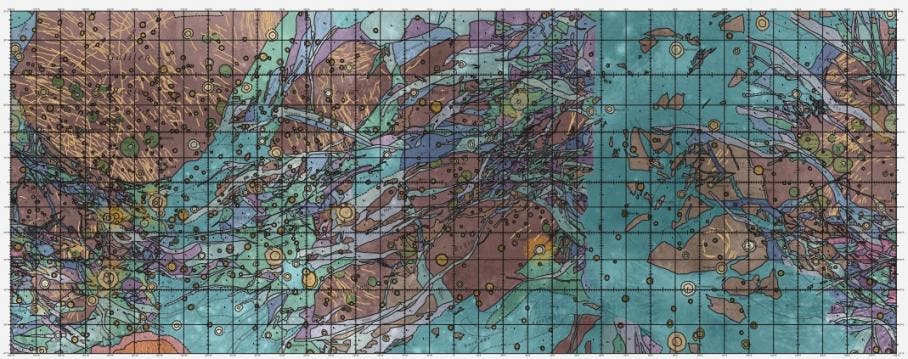
Since the dawn of mankind, across all cultures, we’ve always had two muses: the sun and the moon. We’ve sung epics, made art, even performed blood sacrifice, all in their name. But just like we now know the sun isn’t unique — rather one among billions and billions of stars — so is our lunar muse actually not all that special. Throughout the solar system, there are 187 known moons or 196 if you count those belonging to the dwarf planets.
Considering all of this, you might feel cheated. All of those moons, and we only got one? Well, some planets are more fortunate than others, but at least we’ve got something. The terrestrial planets, Mars, Earth, Venus, and Mercury only have three moons between them. Venus and Mercury have none while Earth has the Moon and Mars has Phobos and Deimos. However, it’s the Jovian planets that are teeming with moons. At the latest count, Jupiter has 81, Saturn has over 60, Uranus has 27, and Neptune has 14.
Why are terrestrial planets so sparsely populated with moons, in stark contrast to the Jovian planets? There are many reasons but the primary one has to do with the sun’s gravitational tug. Mercury and Venus, the two closest planets to the sun in the solar system, simply have a too weak gravitational pull to grab a passing object and keep it in its orbit. Likewise, these planets can never hold enough debris rings in orbit to eventually coalescence into a natural satellite. Earth and Mars managed to do it, but they’re the outermost planets in the inner solar system. The farther from the sun you are, the easier it is to capture or maintain a satellite.
Now, let’s have a look at some of the most notable moons in the solar system.
Moons of the inner solar system
The Moon

Closest to home and our hearts, the moon is one of the biggest in the solar system, with a radius of 1,737 km. With a density of 3.3464 g/cm³, it’s also the second densest moon in the solar system after Jupiter’s Io. The moon only has 0.273 of the Earth’s size and 0.0123 of its mass.
It formed in the aftermath of a giant impact between proto-Earth and a planetary-sized body we call Theia. The giant impact hypothesis was first laid on the table in the mid-1970s when astrophysicists proposed the moon was formed by a grazing collision between the proto-Earth and a Mars-sized body called Theia. This eventually became the leading hypothesis that explained how our sole natural satellite came to be. But then in 2001 scientists reported that the isotopic compositions of a variety of elements collected from both terrestrial and lunar rocks are nearly identical.
An influential paper published in 2016 in Nature showed that lunar rocks are enriched by about 0.4 parts per thousand in the heavier isotope, potassium-41. The only process that would lead to this sort of event, say the researchers, is incomplete condensation of the potassium from the vapor phase during the moon’s formation. In other words, the impact must have completely vaporized both planets, and from that mush of debris, a new Earth and what we now know as the Moon formed.
The moon has a 5° tilt to the plane of Earth’s orbit around the sun. As a result, from our viewpoint on Earth, the moon normally passes either above or below the sun each month at new moon. In late 2015, two planetary scientists – Kaveh Pahlevan and Alessandro Morbidelli – published a paper in which they explain how the moon got this tilt. According to their simulations near-misses between the Earth-moon system and large objects like asteroids gravitationally jostled the moon into a tilted orbit.
Another recent insight into the moon’s geology and history suggests its interior holds a lot of water. With the help of data from India’s Chandrayaan-1 spacecraft that was in lunar orbit from 2008-2009, in 2017, a team at Brown University found lots of water encased in the moon’s mantle. All of this water is, of course, not liquid but rather embedded in the rocky material akin to the water trapped within Earth’s mantle. This study is quite important in relation to the Theia Impact hypothesis. It suggests that some of the vaporized water survived or not all of it drifted into space. Alternatively, the water could have been delivered later by asteroids.
Phobos and Deimos
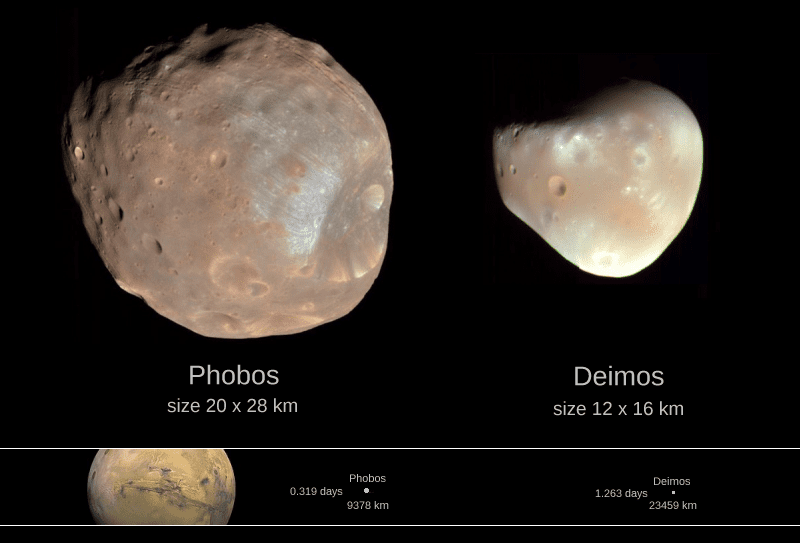
These are Mars’ two moons. Phobos, whose name comes from the Greek phobia (fear), is the larger of the two moons and has the closest orbit to Mars. It’s only 22.7 km across, though, which explains its irregular shape (bigger bodies become naturally spherical due to pressure exerted by gravity). While our moon orbits the Earth at a distance of 384,403 km, Phobos is only 9,377 km above Mars.
Deimos, which in Greek mythology is the twin brother of Phobos and personified terror, is Mars’ second moon. It’s much smaller than Phobos, measuring just 12.6 km across and also orbits its parent planet much farther away than Phobos. At a distance of 23,460 km, Deimos takes 30.35 hours to complete an orbit around Mars.
Moons of the outer solar system
The Galilean moons: Io, Europa, Ganymede, Callisto
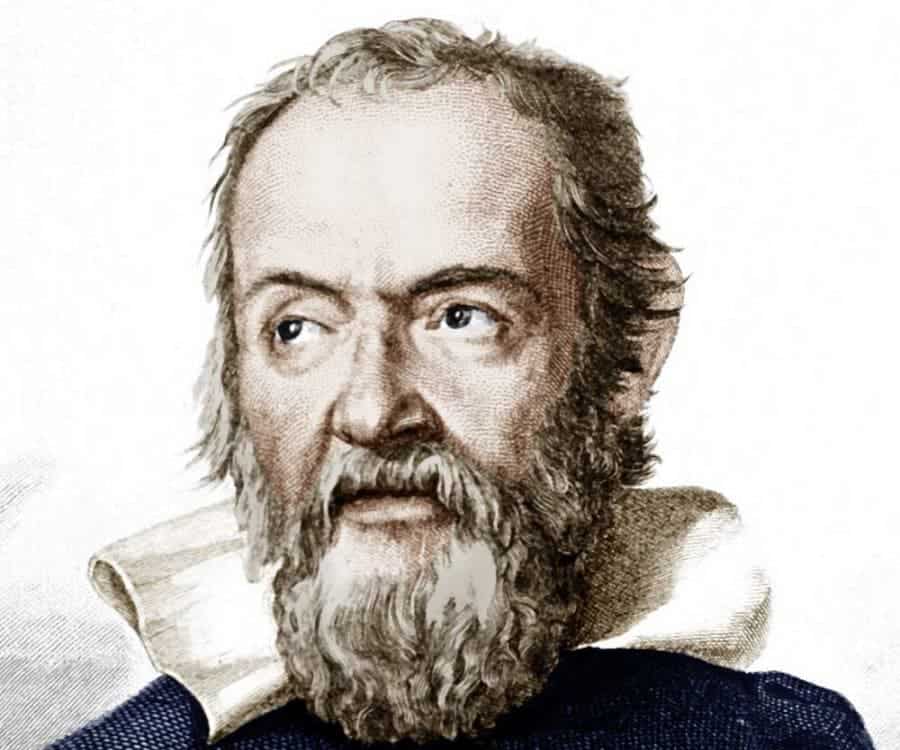
Jupiter has more natural satellites than any other planet in the solar system. By the latest count, there are 81 Jovian moons, the last two being officially recognized in June 2017. Called S/2016 J1 and S/2017 J1, these two moons barely measure 1-2 km across. UPDATE 18 july 2018: Astronomers found 12 new Jovian moons.
By far, the most important Jovian moons are the so-called Galilean moons, in honor of Galileo Galilei who discovered them in 1610. At the time, writing in Sidereus Nuncius, Galilei asserted that the four observations were planetary bodies. Nevertheless, the findings proved extremely influential for a time when the Copernican system was still out of favor. Galileo’s discoveries brought important evidence to support the idea that not everything revolved around the Earth.
“I should disclose and publish to the world the occasion of discovering and observing four Planets, never seen from the beginning of the world up to our own times, their positions, and the observations made during the last two months about their movements and their changes of magnitude; and I summon all astronomers to apply themselves to examine and determine their periodic times, which it has not been permitted me to achieve up to this day . . . On the 7th day of January in the present year, 1610, in the first hour of the following night, when I was viewing the constellations of the heavons through a telescope, the planet Jupiter presented itself to my view, and as I had prepared for myself a very excellent instrument, I noticed a circumstance which I had never been able to notice before, namely that three little stars, small but very bright, were near the planet; and although I believed them to belong to a number of the fixed stars, yet they made me somewhat wonder, because they seemed to be arranged exactly in a straight line, parallel to the ecliptic, and to be brighter than the rest of the stars, equal to them in magnitude . . .When on January 8th, led by some fatality, I turned again to look at the same part of the heavens, I found a very different state of things, for there were three little stars all west of Jupiter, and nearer together than on the previous night.”
“I therefore concluded, and decided unhesitatingly, that there are three stars in the heavens moving about Jupiter, as Venus and Mercury around the Sun; which was at length established as clear as daylight by numerous other subsequent observations. These observations also established that there are not only three, but four, erratic sidereal bodies performing their revolutions around Jupiter,” Galilei wrote on March 1610 in Sidereus Nuncius.
Io, Europa, Ganymede, and Callisto are the solar system’s fourth, sixth, first, and third largest satellites, respectively. Though they’re just 4 of 69 known satellites, they collectively sum 99.999 percent of the total mass orbiting Jupiter, including the ring system.
Io
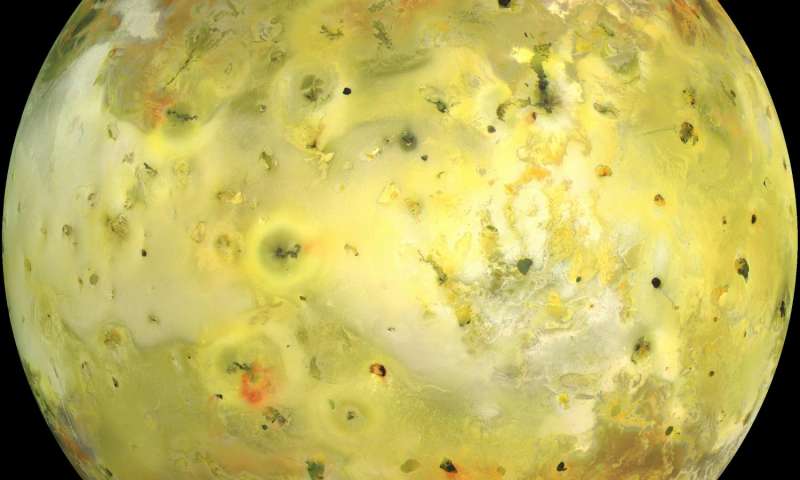
Io is the innermost Galilean moon and fourth-largest moon in the solar system, standing 3,642 km in diameter. Like all other moons in the solar system, its name comes from Greek mythology after a priestess that served Hera and later became Zeus’ lover.
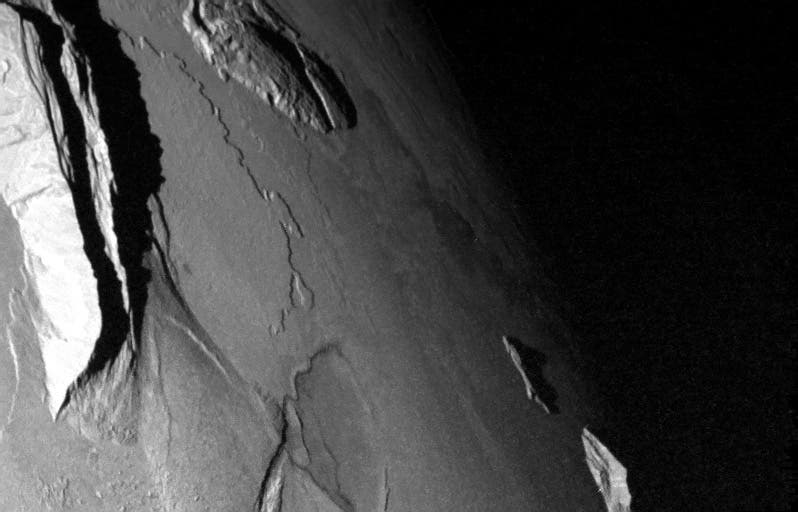
What’s particularly interesting about Io is that it’s very geologically active. The interior of Io is continuously heated, which leads to many active volcanoes on its surface — around 400 active volcanoes by the most recent count. The moon’s surface is also dotted by more than 100 mounts, some taller than Mount Everest.
Europa
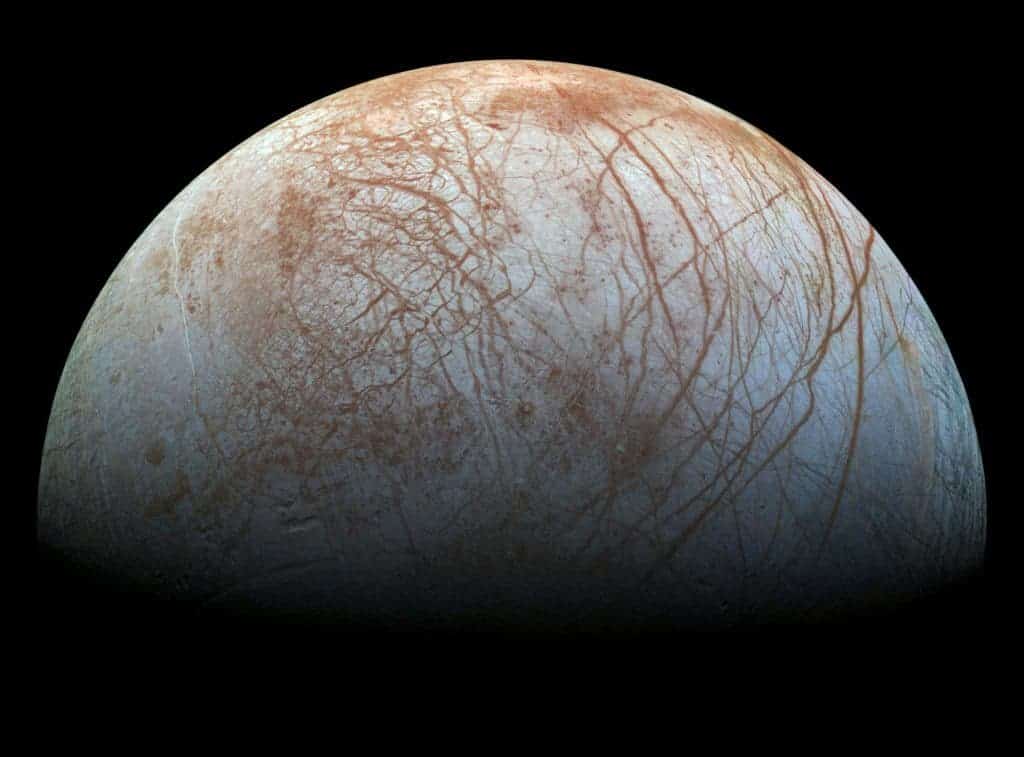
Europa is the second innermost moon of Jupiter. It’s named after the mythical Phoenician noblewoman who was courted by Zeus and became the queen of Crete. It’s the smallest of all the Galilean moons, at just 3121.6 kilometers in diameter. Don’t let its size fool you, though.
Many scientists believe that Europa is the best place in the solar system to look for alien life, which might stay hidden beneath the moon’s blanket of ice.
Europa’s surface temperature at the equator never rises above minus -160 degrees Celsius (-260 degrees Fahrenheit). At the poles of the moon, the temperature never rises above -220 C (-370 F). The subsurface, however, is a whole different story. Beneath the dozens of miles of thick ice, scientists think Earth-like salty and liquid oceans can be found.
“Europa’s ocean is considered to be one of the most promising places that could potentially harbor life in the solar system,” said Geoff Yoder, acting associate administrator for NASA’s Science Mission Directorate in Washington. “These plumes, if they do indeed exist, may provide another way to sample Europa’s subsurface.”
The plumes, which can rise 200km above the Europa’s surface and which Yoder was referring to, were first observed jetting from the moon’s surface in 2013. In April 2017, NASA announced the discovery of hydrogen molecules in the plumes spewing off one of Saturn’s icy moons called Enceladus. This suggests that there are hot spots hidden beneath the ocean which can provide enough energy for life to both appear and thrive, given how common hydrothermal vents or underwater geysers are on Earth’s ocean floor. A similar plume was identified gushing out of Europa, suggesting similar things occur as on Enceladus.
Whether or not life exists on Europa might not be a rhetorical matter. NASA plans on sending three different instrument suites which will collect samples and analyze them, looking for native life forms. It’s not clear when this will happen.
Besides Earth, Europa seems to be the only other place in the solar system that has plate tectonics.
Ganymede

This moon is the largest moon in the entire Solar System. At 5262.4 kilometers in diameter, it’s actually bigger than the planet Mercury, though it has only half its mass being an icy world much like Europa.
Another notable distinction is that Ganymede has a magnetosphere, likely created through convection within the liquid iron core. Some scientists argue that the presence of a magnetic field is indicative of a subsurface ocean on the moon.
Ganymede is characterized by a mix of smooth, dark regions dotted with craters but also lighter regions where deep grooves are visible.
It’s also striking that this moon has an oxygen atmosphere that includes O, O2, and possibly O3 (ozone), and some atomic hydrogen.
Callisto
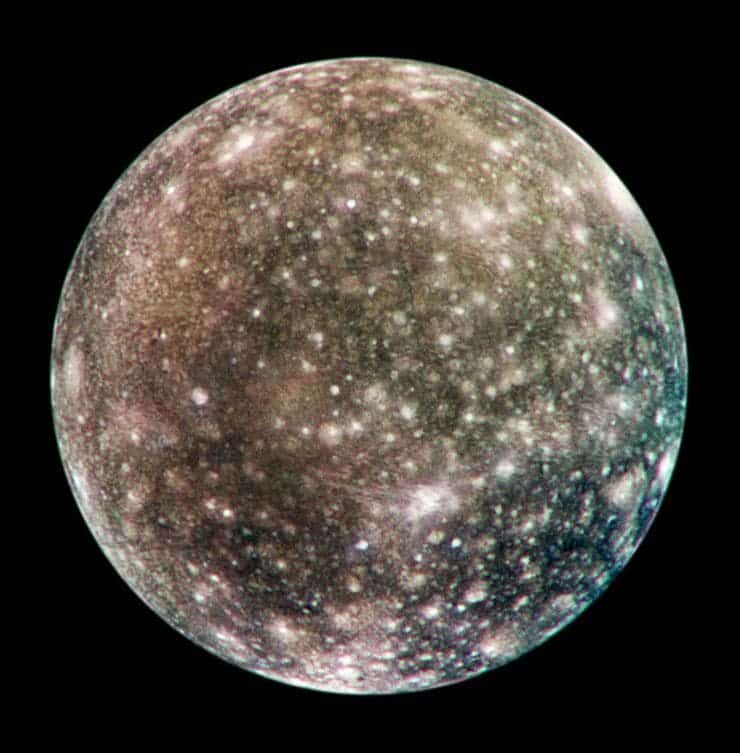
It’s the fourth and farthest Galilean moon. At 4820.6 kilometers in diameter, it is also the second largest of the Galileans and third largest moon in the Solar System.
The moon is named after the daughter of the Arkadian King, Lykaon, and a hunting companion of the goddess Artemis.

Callisto is the most similar satellite to our own moon — heavy cratered and mostly dark in appearance. Since it’s so littered with craters, this tells us that it must one of the oldest among the Galilean moons. One crater, in particular, has a diameter in the order of several thousand kilometers suggesting a massive impact occurred sometime in Callisto’s history. In fact, it’s very surprising the moon survived the ordeal intact. Again, observations suggest this satellite might have a subsurface ocean.
Saturn’s moons
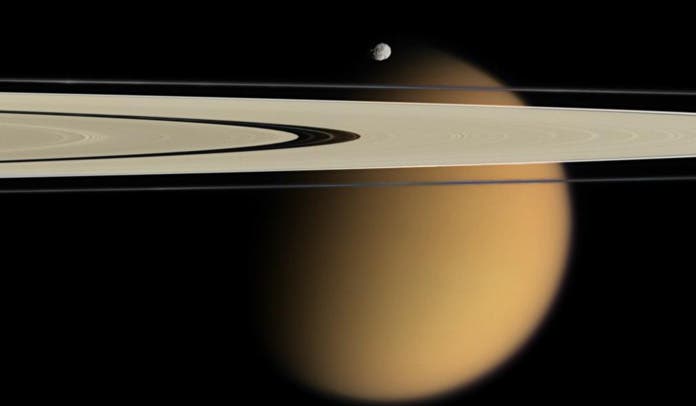
Like Jupiter, Saturn’s orbit is packed with moons — some 150 moons and moonlets. Most, however, are very small with a high fraction ranging from less than 10 km in diameter to between 10 and 50 km in diameter. Saturn does have a couple of very large moons, all named after the Titans of Greek mythology.
The biggest and most important moon is Titan, discovered by Christiaan Huygens in 1655. Like Ganymede, Titan is bigger than the planet Mercury, at 5150 km in diameter. It also comprises 96% of the mass in orbit around the planet.
Titan is also one of the few moons in the solar system to support an atmosphere. It’s thick, cold, and primarily composed of nitrogen with some methane — quite similar to what we call smog here on Earth.
The dense haze that covers the planet has always made it difficult to observe Titan and for a very long time, we knew nothing about what its surface looks like. Hubble Space Telescope images, as well as those from the Cassini satellite mission to Saturn, have finally allowed astronomers to penetrate the hazy atmosphere of Titan, revealing that it has surface features.

We’ve learned, for instance, that Titan is the only place in the solar system other than Earth with liquids on its surface. It’s not water though. Instead, images beamed back by the Huygens lander from the beginning of 2005 suggest Titan is covered rivers and lakes that appear to have contained liquid methane-ethane.
Other notable Saturnian moons include Iapetus (1671), Rhea (1672), Dione (1684), and Tethys (1684) — all discovered by Giovanni Domenico Cassini — and Mimas (1789) and Enceladus (1789), discovered by William Herschel.
Enceladus displays evidence of active ice volcanism: Cassini observed warm fractures where evaporating ice evidently escapes and forms a huge cloud of water vapor over the south pole, and as mentioned earlier, tall plumes gushing out of Enceladus suggest there might be a chance of finding life there.
Sixteen of Saturn’s moons keep the same face toward the planet as they orbit. Called “tidal locking,” this is the same phenomenon that keeps our Moon always facing toward Earth.
Uranus’ moons
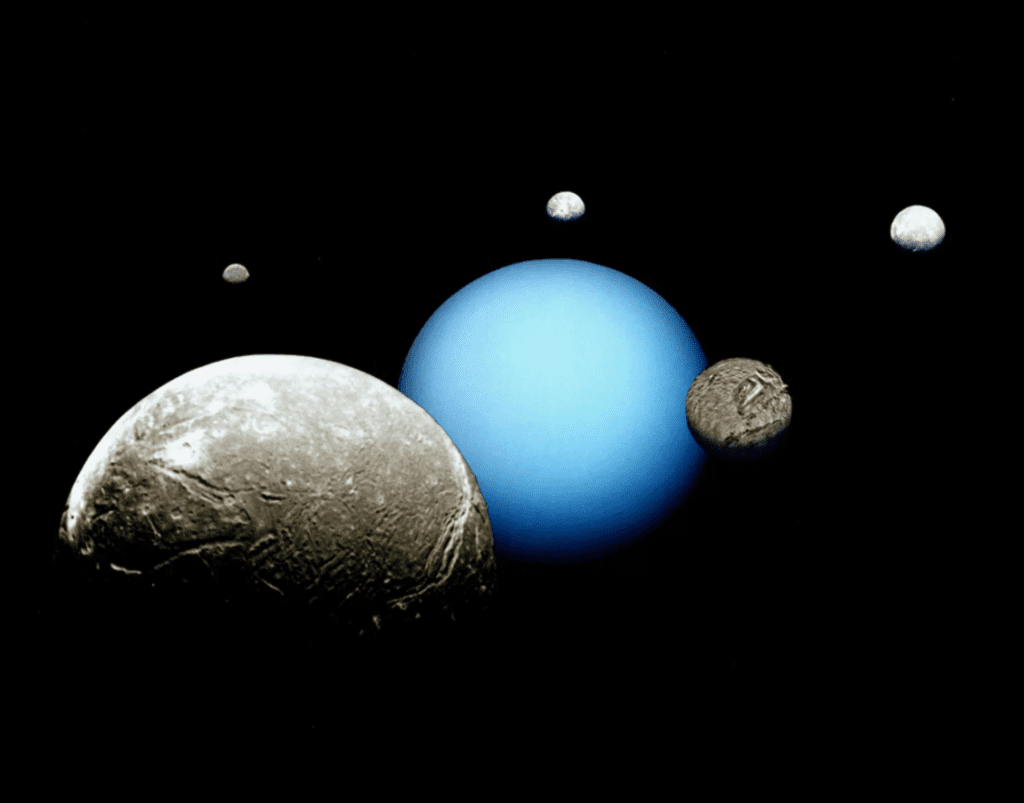
Uranus has 27 moons that astronomers know of. Like all other gas giants, Uranus has many small satellites but also a couple of large moons like Miranda, Ariel, Umbriel, Oberon, and Titania, in this very order by size. Their size range varies from 472 km for Miranda to 1,578 km for Titania. Ariel is the brightest while Umbriel is the darkest but all of Uranus’ moons are dark overall. Most are comprised of rock and ice with the notable exception of Miranda which is primarily ice. We’re not talking about water ice, though. The components may include ammonia and carbon dioxide.
Scientists reckon all of these larger moons formed out of the accretion disk which once gravitated around the planet. Alternatively, the material that seeded from the moons could have been debris following a major impact early in the history of Uranus.
Neptune’s moons
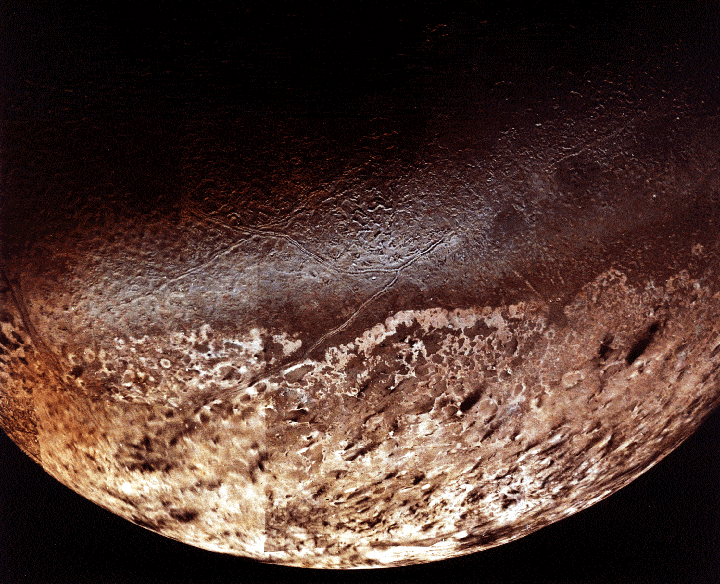
Neptune has 14 satellites, all of which are aptly named after Greek and Roman deities of the sea. Based on their orbit and proximity to Neptune, these can be divided into two main groups: the regular and irregular moons.
Neptune’s regular moons are Naiad, Thalassa, Despina, Galatea, Larissa, Proteus, and S/2004 N 1 (the only Neptune moon missing a proper name). Neptune’s irregular moons consist of the remaining satellites, including Triton — a strange satellite and the first Neptune moon discovered. William Lassell discovered Triton on October 10th, 1846 while he was attempting to confirm his observation, made just the previous week, that Neptune had a ring.
All of Neptune’s moons, with the exception of Triton which orbits close to the planet, have retrograde and eccentric orbits far away from the planet. In any event, not much is known about satellites belonging to both Uranus and Neptune. No spacecraft has come near them ever since Voyager 2, which is now close to exiting the solar system.
Pluto and the Kuiper Belt
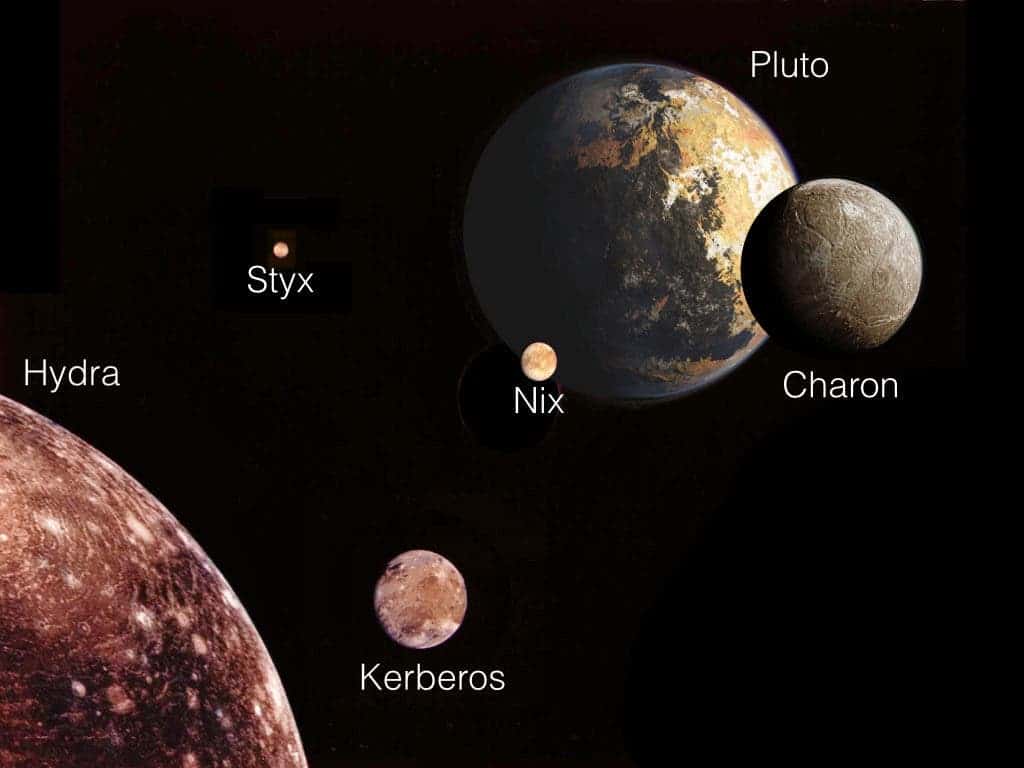
Pluto is by far the most difficult of the nine historical planets to study. I say historical because Pluto has been demoted to a dwarf planet status in August 2006 by the International Astronomical Union (IAU). But the in July 2015, NASA’s New Horizons missions performed the first spacecraft flyby of Pluto revealing much about it and its surrounding moons.
Pluto has five moons that we know of, four of which have been discovered only in the last decade. These are Charon, Hydra, Nix, Styx, and Kerberos — named after creatures and places from Pluto’s underworld.
Pluto’s system of moons is quite peculiar in many ways. Pluto’s four small moons — Styx, Nix, Kerberos and Hydra — follow near-circular, near-equatorial orbits around the central ‘binary planet’ comprising Pluto and its large moon, Charon. This has prompted some astronomers to call Pluto and Charon a ‘binary-dwarf system’.
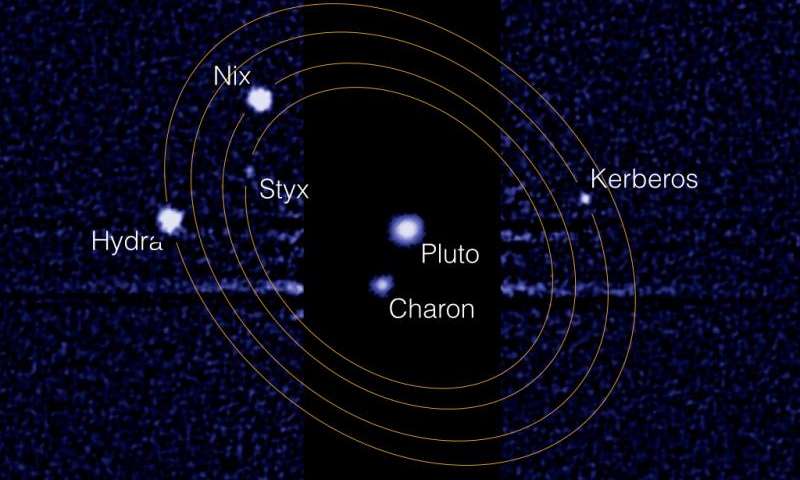
What’s more, Charon and Pluton are tidally locked to the other meaning the two always present the same face to each other, like the Earth and the Moon. From any position on either of the two bodies, the other is always at the same position in the sky or always obscured. Mathematically, this entails that the each body’s rotational period is equal to the time it takes the entire binary dwarf system to rotate around its common center of gravity.
Styx, Nix, and Hydra are tied together by a three-body resonance, so any chaotic movement exhibited by one of them will spread the chaos further to the others.
“It’s not just a little bit chaotic,” Mark Showalter from the New Horizons team said. “Nix can flip its entire pole. It could actually be possible to spend a day on Nix in which the sun rises in the east and sets in the north. It is almost random-looking in the way it rotates.”
There are four other dwarf planets in the solar system that we know of besides Pluto. These are Eris, Makemake, Haumea, and Ceres, which can be found well beyond Neptune into the outer limits of the solar system. Each has one or a couple of moons. Haumea has two moons, Hi’iaka and Namaka. Eris has one moon called Dysnomia, which is named after the daughter of Eris in Greek mythology. Finally, last year in 2016, astronomers confirmed that Makemake has at least one moon, for now, designated S/2015 (136472).
Bonus: the first moon outside our solar system
Just earlier this week, a team led by David Kipping of Columbia University announced exciting data that suggests they’ve found the first ever exomoon. The statistical confidence that the observed signal is real and not the result of some random aberration was 99.999%. So that’s about as sure as you get but in science, things are almost never certain. The researchers will have the chance to find out for sure once the Hubble Space Telescope directs its lens on the star in question, located some 4,000 light-years away from Earth. If this is confirmed, it will be the first moon we’ve ever seen outside our solar system.



